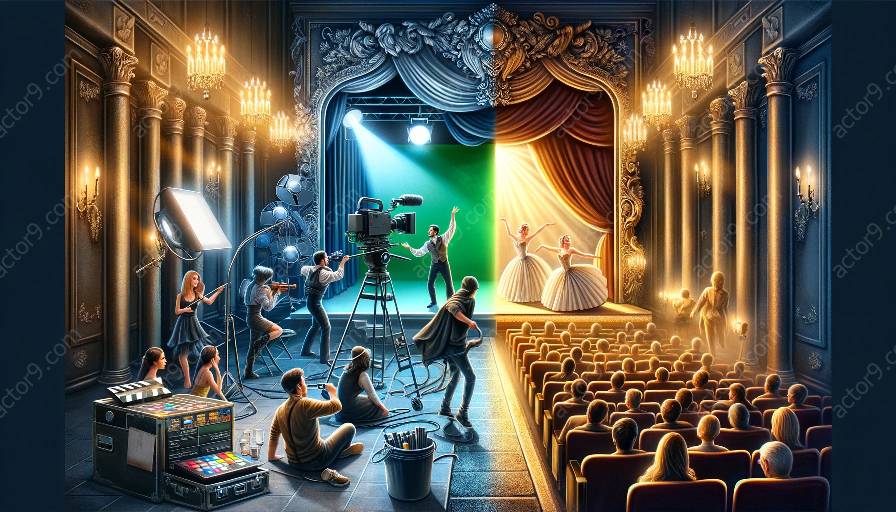When it comes to performing arts, acting on stage and on film carry unique characteristics that influence the way the audience interacts and provides feedback. In this article, we will explore the differences in audience interaction and feedback between film and stage acting, examining the essential elements that set these two forms of acting apart. Understanding these distinctions is crucial for actors to adapt their performances effectively and engage with their audience according to the specific requirements of each medium.
Film Acting vs. Stage Acting
Acting on film and stage each present distinct opportunities for engaging with audiences and receiving feedback. In film acting, the audience interaction happens through a mediated experience. The performance is captured by cameras and projected onto screens, which may be viewed by audiences in various settings such as cinemas, homes, or mobile devices. As a result, the feedback from the audience in film acting is often less immediate and direct. Actors usually do not receive live responses during their performance, and their feedback is more likely to come after the film's release through reviews, ratings, and audience reactions shared online.
On the other hand, stage acting allows for direct, live audience interaction. Actors perform in front of a live audience, and the feedback is immediate, encompassing the audience's laughter, applause, gasps, and other vocal and non-verbal expressions. The energy and reactions of the audience directly affect the actors' performances, creating a unique and dynamic relationship between the actors and the viewers.
Audience Engagement and Feedback in Film Acting
One of the key differences in audience interaction between film and stage acting lies in the level of control over the audience's experience. In film acting, the director and editor have significant influence over the audience's perception of the performance. Through the use of camera angles, editing, sound design, and visual effects, filmmakers can manipulate the audience's attention and emotional responses. The actors' performances are often shaped and enhanced during the post-production process, which can have a profound impact on how the audience perceives and reacts to the characters and their portrayal.
Moreover, the audience's engagement with film acting extends beyond the screening of the movie. With the advent of digital platforms and social media, audiences can now actively participate in discussions, create memes, and share their opinions about the actors' performances. This dynamic feedback loop continues long after the initial release of the film, influencing the public perception of the actors and their work.
Audience Interaction and Feedback in Stage Acting
Conversely, stage acting provides a more immediate and immersive experience for both the audience and the actors. The absence of camera-based mediation means that stage actors have to rely on their live presence, voice, and physicality to engage with the audience. The feedback from the audience is unfiltered and direct, creating a symbiotic relationship between the performers and the spectators. Actors can gauge the audience's reactions in real time and adjust their performances accordingly, leading to a dynamic and interactive exchange of emotions and energies.
Furthermore, the communal nature of theater-going fosters a sense of shared experience among audience members. Unlike the solitary act of watching a film, attending a live theater performance brings people together in a shared space, allowing for collective emotional responses and shared moments of catharsis. The applause, standing ovations, and immediate verbal reactions from the audience contribute to the electric atmosphere of live performances.
Impact on the Actor's Performance
The differences in audience interaction and feedback between film and stage acting have profound implications for actors and their craft. Film actors must master the art of conveying emotions and nuances that can resonate with audiences across different contexts and viewing environments. Their performances need to withstand the scrutiny and analysis of diverse viewers who may interpret their work in various ways.
On the other hand, stage actors rely on connecting with the audience in the moment, utilizing their vocal projection and bodily expressions to convey emotions and tell compelling stories. The immediate feedback from the audience influences the rhythm and intensity of their performances, requiring an acute awareness of the viewer's responses and an ability to adapt in real time.
Conclusion
In conclusion, the differences in audience interaction and feedback between film and stage acting profoundly shape the dynamics of the performer-audience relationship. While film acting allows for a wider reach and prolonged engagement with the audience, stage acting offers an immediate and visceral connection that can deeply impact the live experience. Understanding the distinct nature of audience interaction and feedback in both mediums is essential for actors to hone their skills and navigate the unique demands of each platform, ultimately enriching their performances and fostering a deeper connection with their audience.















































